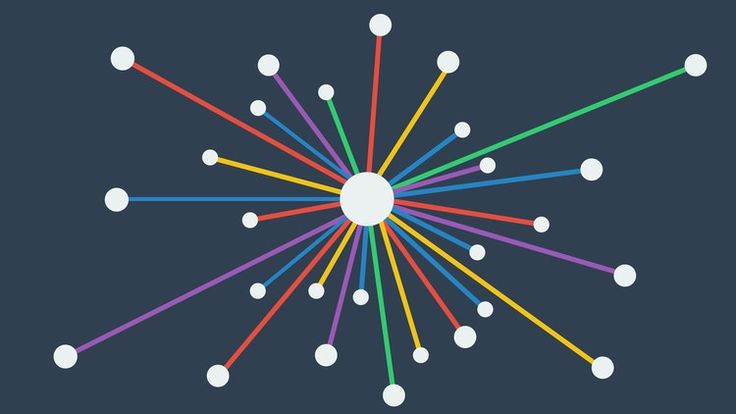As technology evolves, the terms Artificial Intelligence (AI), Machine Learning (ML), and Deep Learning (DL) are often used interchangeably, causing confusion. In this comprehensive guide, we embark on a journey to demystify these technologies, elucidating their unique characteristics and dispelling the misconceptions that surround them. Whether you’re a tech enthusiast or a novice in the field, join us as we delve into the distinctions between AI, ML, and DL, unraveling the intricate layers that define each.
Introduction to Artificial Intelligence (AI)
Artificial Intelligence (AI) is a multidisciplinary field of computer science focused on creating intelligent machines capable of mimicking human cognitive functions. The evolution of AI can be traced through several stages, from its conceptualization in the mid-20th century to its current transformative impact on various industries. Early AI developments aimed at rule-based systems and symbolic reasoning, but progress was limited due to computational constraints. The advent of machine learning marked a significant shift, allowing systems to learn patterns and make decisions from data. Contemporary AI leverages advanced algorithms, big data, and computational power, leading to breakthroughs in natural language processing, computer vision, and reinforcement learning. As AI continues to evolve, it plays an increasingly integral role in shaping technological advancements, influencing everything from autonomous vehicles to healthcare diagnostics, revolutionizing the way we interact with and harness the power of intelligent machines.
AI applications have permeated diverse industries, revolutionizing processes and unlocking unprecedented efficiencies. In healthcare, AI aids in diagnostics and personalized treatment plans, enhancing patient care. The finance sector benefits from AI-driven fraud detection and algorithmic trading, optimizing decision-making. In manufacturing, AI streamlines operations through predictive maintenance and quality control. Retail experiences a transformation with AI-powered recommendation systems, while in logistics, it optimizes supply chain management. AI-driven virtual assistants and language processing redefine customer service. The impact of AI extends across education, agriculture, and beyond, showcasing its transformative potential in reshaping industries, driving innovation, and paving the way for a future where intelligent systems play a central role in solving complex challenges.
Demystifying Machine Learning (ML)
Machine Learning (ML) algorithms are computational models designed to enable machines to learn patterns, make predictions, and improve performance over time without explicit programming. These algorithms form the backbone of ML systems by processing and analyzing data to identify underlying patterns or relationships. Supervised learning algorithms learn from labeled datasets, mapping input data to corresponding output labels. Unsupervised learning algorithms, on the other hand, explore data without predefined labels, discovering intrinsic structures and patterns. Reinforcement learning algorithms involve training models through a system of rewards and punishments based on their actions. The diversity of ML algorithms, ranging from decision trees and support vector machines to neural networks, allows their application across a spectrum of tasks, from image recognition to natural language processing, contributing to the versatility and efficacy of machine learning in various domains.
Machine Learning (ML) applications span a wide array of industries, showcasing its versatility and transformative impact. In healthcare, ML aids in disease diagnosis and prognosis, personalized treatment plans, and drug discovery. Financial institutions leverage ML for fraud detection, credit scoring, and algorithmic trading. E-commerce platforms use recommendation systems powered by ML algorithms to enhance customer experiences. Autonomous vehicles rely on ML for image recognition and decision-making. In manufacturing, predictive maintenance and quality control benefit from ML analytics. Natural language processing enables chatbots and virtual assistants in customer service. ML also finds applications in cybersecurity for threat detection, in agriculture for crop monitoring, and in energy for optimizing resource utilization. These examples underscore the pervasive influence of ML across diverse sectors, driving innovation, efficiency, and insights.
Delving into Deep Learning (DL)
Neural networks and deep learning form the backbone of artificial intelligence, mimicking the human brain’s intricate processing to solve complex problems. At their core, neural networks consist of interconnected nodes, or neurons, organized in layers. Deep learning, a subset of machine learning, involves neural networks with multiple hidden layers, enabling them to capture intricate patterns in data. Each layer extracts hierarchical features, learning representations of increasing abstraction. Training deep neural networks involves adjusting weights between neurons through iterative optimization, enhancing their ability to generalize from data. This hierarchical, layered architecture empowers deep learning models to excel in tasks like image and speech recognition, natural language processing, and even playing strategic games, marking a paradigm shift in AI capabilities.
Recent advancements in Deep Learning (DL) have propelled the field to new heights, fostering breakthroughs with profound implications. One key development is the emergence of transformer architectures, such as BERT and GPT, revolutionizing natural language processing tasks by capturing contextual nuances in vast amounts of data. Transfer learning, leveraging pre-trained models for various applications, has significantly improved efficiency and performance. Neural architecture search methods, like AutoML, automate the design of neural network architectures, expediting the development process. Reinforcement learning, combined with deep neural networks, has led to remarkable achievements in autonomous systems, from game-playing agents to robotic control. These breakthroughs underscore DL’s dynamic evolution, constantly pushing the boundaries of what AI systems can achieve, from enhanced language understanding to more sophisticated problem-solving in various domains
AI vs. ML vs. DL: Unraveling the Differences
At its essence, Artificial Intelligence (AI) is a broad concept encompassing the creation of intelligent machines that can perform tasks that typically require human intelligence. Machine Learning (ML) is a subset of AI, focusing on the development of algorithms that enable machines to learn from data and improve their performance without explicit programming. ML includes various techniques, from supervised learning, where models learn from labeled datasets, to unsupervised learning, exploring patterns in unlabeled data, and reinforcement learning, where algorithms learn through trial and error.
Deep Learning (DL) takes ML a step further, introducing neural networks with multiple layers (deep neural networks) to simulate the complex architecture of the human brain. DL excels at feature extraction and representation learning, allowing it to autonomously discover intricate patterns in data. While AI is the overarching goal of creating intelligent machines, ML is the methodology driving them to learn from data, and DL is a specific approach within ML that utilizes deep neural networks for advanced pattern recognition. The distinctions lie in the scope of these fields, with AI being the overarching concept, ML being a subset focused on learning from data, and DL representing a specialized technique within ML that leverages deep neural networks for intricate pattern recognition tasks.
Choosing the Right Technology for Specific Applications
Choosing the right technology—whether it’s Artificial Intelligence (AI), Machine Learning (ML), or Deep Learning (DL)—for specific applications depends on the nature and requirements of the task at hand. In cases where the objective is to develop a system capable of generalizing from data and making predictions, ML is often a suitable choice. Supervised learning is effective when there is labeled data available for training, while unsupervised learning can uncover patterns in unlabeled data. ML’s versatility makes it applicable in various domains, from predictive analytics to recommendation systems.
On the other hand, Deep Learning, with its intricate neural network architectures, excels in tasks demanding complex pattern recognition, such as image and speech processing. DL shines when the volume of data is substantial, and there’s a need for the system to autonomously extract hierarchical features. However, DL requires significant computational resources and labeled data for effective training. The choice between AI, ML, and DL ultimately hinges on the specific goals and characteristics of the application. AI represents the broader goal of creating intelligent systems, ML provides the methodologies for learning from data, and DL, as a specialized technique within ML, is the go-to option for intricate pattern recognition tasks where vast amounts of data and complex features come into play. Understanding the nuances of each technology is crucial for making informed decisions tailored to the requirements of the application at hand.
Conclusion
In conclusion, while AI, ML, and DL share the overarching goal of enabling machines to perform tasks intelligently, they operate at different levels of complexity and autonomy. AI encompasses the broader concept of creating machines that can simulate human intelligence, while ML represents a subset of AI, focusing on machines learning from data to improve performance. Deep Learning, on the other hand, dives even deeper, employing neural networks to mimic the human brain’s intricate processing. As we navigate this technological landscape, understanding these nuances becomes paramount for anyone seeking to harness the potential of these cutting-edge advancements.

